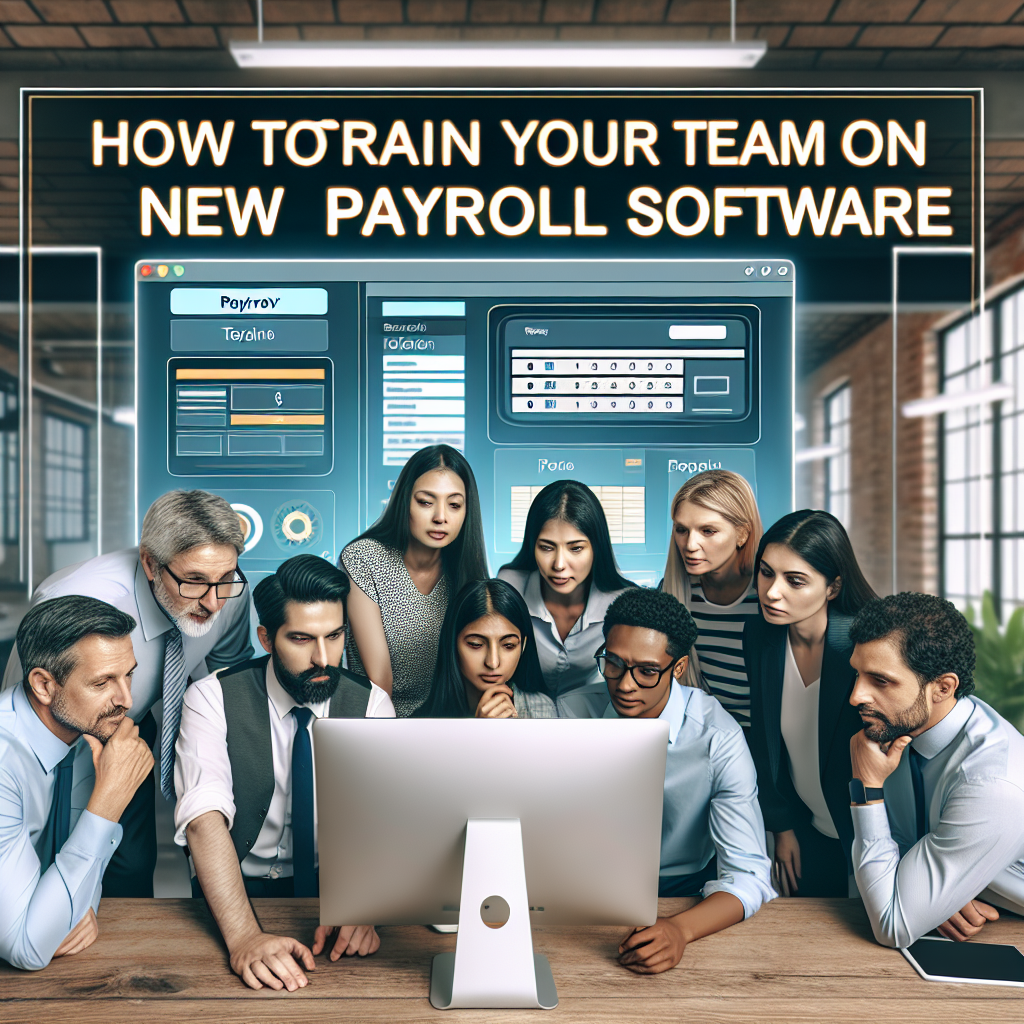In today’s fast-paced business world, implementing new software can be both exciting and daunting. Payroll software, in particular, is a critical tool for businesses, managing employees’ salaries, taxes, and benefits efficiently. However, introducing a new system requires careful planning and training to ensure that your team is fully equipped to use the software effectively. In this guide, we’ll explore how to train your team on new payroll software in a way that fosters collaboration and minimizes stress.
Understanding the Importance of Payroll Software Training
When it comes to payroll software, accuracy and timeliness are key. An improperly trained team can lead to errors that may affect employee satisfaction and compliance with labor laws. Thus, it’s crucial to understand why training is important:
- Minimize Errors: Proper training helps reduce mistakes in payroll processing.
- Increase Efficiency: Familiarity with the software means quicker task completion.
- Boost Employee Morale: Employees appreciate being paid correctly and on time.
Preparing for the Transition
1. Assess Current Skills and Needs
Before diving into training, take a moment to assess your team’s current skills and experiences with payroll. Conduct a skills gap analysis to identify who may require more intensive training and who may be comfortable with a more advanced curriculum.
2. Choose the Right Payroll Software
Selecting payroll software that best fits your business needs can make training much easier. Consider software that offers customizable training materials, user-friendly interfaces, and effective customer support. It’s essential to ensure that the software aligns with your specific requirements to streamline the training process.
Developing a Structured Training Plan
3. Create a Training Schedule
Time management is crucial when introducing new software. Develop a training schedule that minimizes disruption to daily operations. Consider breaking training sessions into manageable chunks rather than overloading your team with information all at once.
4. Utilize Multiple Training Methods
People learn in different ways, so offering varied training methods will cater to your team’s diverse learning styles. Here are some effective methods to consider:
- Interactive Workshops: Hands-on sessions allow team members to explore the software.
- Online Tutorials and Webinars: Allow for self-paced learning.
- Documentation and User Guides: Provide written resources for reference.
5. Assign Roles and Responsibilities
Decide which team members will take the lead on specific aspects of the training. Designate "champions" within your team—individuals who can foster peer learning and support others as they navigate the new system.
Implementing the Training
6. Conduct Informative Training Sessions
Kick off your training initiative with a comprehensive overview of the payroll software’s features. Highlight important functions such as employee onboarding, time tracking, and tax compliance. Make sure to leave time for questions and engage your employees actively.
7. Foster Continuous Learning
Training shouldn’t end after the initial sessions. Encourage a culture of continuous learning by organizing regular follow-up sessions, refresher courses, or quick tips that cover advanced features of the software.
8. Encourage Collaboration and Support
Create a supportive environment where team members can collaborate and assist each other. Establish a communication channel—like a Slack group or dedicated email thread—where employees can ask questions and share experiences regarding the new software.
Evaluating Success and Getting Feedback
9. Monitor Progress
After the training sessions, monitor how well your team is applying what they have learned. This could involve observational assessments or feedback on the payroll processing tasks.
10. Gather Feedback
Once the payroll software has been in use for some time, gather feedback from your team. Ask them what features they find most useful, any challenges they faced, and what improvements could be made in future training sessions. Their insights will be invaluable in refining your ongoing training strategy.
Conclusion
Introducing new payroll software to your team is a significant step toward enhancing your business’s efficiency and accuracy in payroll management. By adopting a structured training approach, you can minimize disruptions and empower your team to embrace the new technology with confidence. Remember, training is not a one-time event but an ongoing process that fosters growth and collaboration. With the right mindset and resources, you can ensure a seamless transition that benefits not only your team but also your organization as a whole.
By taking these steps, you can create a positive training experience and set your team up for success with the new payroll software. Happy training!


